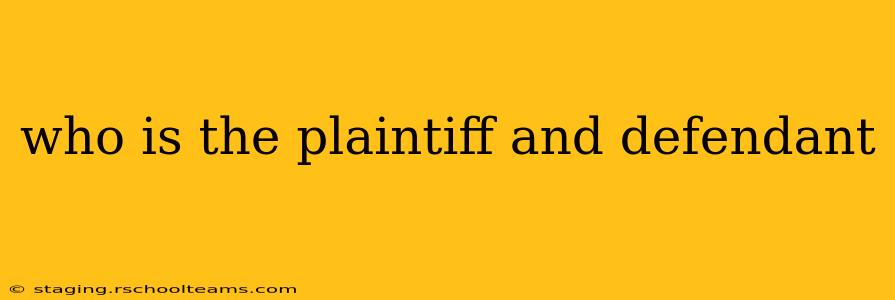The terms "plaintiff" and "defendant" are legal terms used to identify the parties involved in a lawsuit. Understanding who is who is crucial to understanding the case. Let's break it down:
Who is the Plaintiff?
The plaintiff is the person or entity who initiates the lawsuit. They are the one who believes they have been wronged and are seeking legal redress (a remedy or solution) from the court. They file the complaint or petition, outlining their grievances and the relief they are seeking. Think of the plaintiff as the one bringing the case against someone else.
Examples of Plaintiffs:
- In a personal injury case: The person injured in a car accident.
- In a breach of contract case: The party who believes the other party failed to fulfill their contractual obligations.
- In a divorce case: Either spouse initiating the divorce proceedings (although some jurisdictions might use different terminology).
- In a class-action lawsuit: A group of individuals who have suffered similar harm.
Who is the Defendant?
The defendant is the person or entity against whom the lawsuit is filed. They are the party accused of wrongdoing and are required to respond to the claims made by the plaintiff. They must file an answer, either admitting or denying the allegations. The defendant is the one being sued or defending themselves against the claims.
Examples of Defendants:
- In a personal injury case: The person who caused the car accident (or their insurance company).
- In a breach of contract case: The party who allegedly failed to fulfill their contractual obligations.
- In a divorce case: The spouse who is being served with divorce papers.
- In a class-action lawsuit: The company or organization accused of causing the harm to the class members.
Distinguishing Plaintiffs and Defendants: The Simple Rule
Remember this simple rule: The plaintiff is suing the defendant.
Beyond the Basics: Other Parties Involved
While plaintiff and defendant are the primary parties, other parties might be involved in a lawsuit, such as:
- Intervenors: Individuals or entities who join the lawsuit to protect their interests.
- Third-party defendants: Individuals or entities brought into the lawsuit by the defendant.
- Garnishees: Individuals or entities who hold assets of the defendant, potentially subject to seizure to satisfy a judgment.
Understanding the roles of the plaintiff and defendant is fundamental to grasping the dynamics of any legal dispute. The specific details of each case, however, will determine the precise nature of the claims and the defenses presented.
